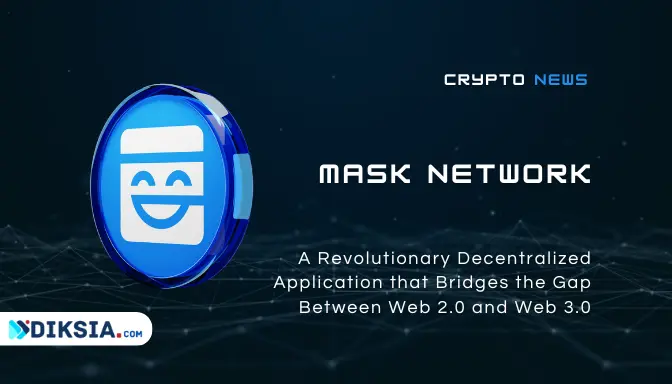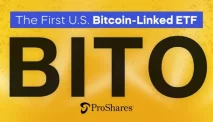Mask Network History
How did Mask Network Come About?
Mask Network was born out of the vision of creating a more open, decentralized, and secure internet, where users can access and share Web 3.0 content and applications on Web 2.0 platforms, without compromising their privacy, data, and freedom. Mask Network was also inspired by the idea of creating a more inclusive, diverse, and creative community, where users can express themselves and collaborate with others across different platforms and protocols.
Mask Network was founded by Suji Yan and Yisi Liu in 2018, under the name of Maskbook. The initial version of Maskbook was a browser extension that allowed users to encrypt and decrypt messages on Facebook, using a hybrid encryption scheme. Maskbook also allowed users to send and receive cryptocurrencies, such as Bitcoin and Ethereum, on Facebook, using a peer-to-peer network.
In 2019, Maskbook expanded its scope and functionality, by supporting more social media platforms, such as Twitter and Instagram, and more Web 3.0 protocols, such as ENS, Uniswap, and Gitcoin. Maskbook also introduced the concept of Red Packet, which is a digital envelope that contains cryptocurrencies or tokens, and can be sent and received on social media platforms, as a way of celebrating, rewarding, or donating.
In 2020, Maskbook rebranded itself as Mask Network, to reflect its ambition and vision of becoming a comprehensive and versatile decentralized application that bridges Web 2.0 and Web 3.0. Mask Network also launched its native token, MASK, which is an ERC-20 token that serves as the utility and governance token of the Mask Network ecosystem. Mask Network also added more features and functionalities, such as Mask Wallet, Mask NFT, and Mask DAO, which allow users to manage their cryptocurrencies and tokens, create, collect, and trade NFTs, and participate in the governance and development of Mask Network, respectively.
In 2021, Mask Network continued to grow and innovate, by supporting more Web 3.0 applications, such as decentralized exchanges, NFT marketplaces, and DAOs, which can be accessed and interacted with directly on social media platforms. Mask Network also partnered with various projects and platforms, such as Binance Smart Chain, Polygon, Arweave, and The Graph, to enhance its scalability, interoperability, and performance. Mask Network also launched its own NFT platform, Mask Network Art, which allows users to mint and display NFTs on social media platforms, without any fees or intermediaries.
What is the Development Roadmap for Mask Network?
Mask Network has a clear and ambitious development roadmap, which outlines its plans and goals for the future. According to its official website, some of the upcoming milestones and features of Mask Network are:
- Q1 2021: Launch of MASK token and MaskDAO, integration of Uniswap and SushiSwap widgets, support for Ethereum and Binance Smart Chain networks, and launch of ITO (initial Twitter offering) feature, which allows users to create and participate in token sales on Twitter.
- Q2 2021: Integration of more Web 3.0 applications, such as Aave, Compound, MakerDAO, Curve, Balancer, and 1inch, support for more social media platforms, such as Instagram, Reddit, and Discord, and launch of Red Packet feature, which allows users to send and receive cryptocurrencies on social media platforms.
- Q3 2021: Integration of more Web 3.0 applications, such as Synthetix, Yearn, and dYdX, support for more blockchain networks, such as Polkadot, Solana, and Near, and launch of NFT feature, which allows users to create, buy, and sell NFTs on social media platforms.
- Q4 2021: Integration of more Web 3.0 applications, such as Aragon, MolochDAO, and Gnosis, support for more social media platforms, such as TikTok, Snapchat, and LinkedIn, and launch of DAO feature, which allows users to create and join DAOs on social media platforms.
Who are the Key People Behind Mask Network?
Mask Network is led by a team of experienced and passionate professionals, who have backgrounds and expertise in various fields, such as computer science, cryptography, blockchain, artificial intelligence, and entrepreneurship. Some of the key people behind Mask Network are:
- Suji Yan: Suji Yan is the founder and CEO of Mask Network, who is also the founder and CEO of Dimension, a company that develops decentralized protocols and applications. Suji Yan is a serial entrepreneur and hacker, who has been involved in various projects in the blockchain space, such as Tesseracts, Gitcoin China, and Maskbook.
- Yisi Liu: Yisi Liu is the co-founder and CTO of Mask Network, who is also the co-founder and CTO of Dimension. Yisi Liu is a former software engineer at Microsoft and Alibaba, who has extensive experience in developing web and mobile applications, as well as blockchain and cryptography technologies.
- Guangbiao Li: Guangbiao Li is the co-founder and COO of Mask Network, who is also the co-founder and COO of Dimension. Guangbiao Li is a former product manager at Tencent and Alibaba, who has a strong background in product design, user experience, and business development.
- Tina Zhen: Tina Zhen is the head of marketing and community at Mask Network, who is also the head of marketing and community at Dimension. Tina Zhen is a former marketing manager at Huobi and OKEx, who has a deep understanding of the cryptocurrency and blockchain industry, as well as the social media landscape.
Mask Network Technology
What is the Underlying Technology of Mask Network?
Mask Network is powered by a browser extension that can be installed on Chrome, Firefox, and Brave. The browser extension injects a widget into the social media posts, which can display Web 3.0 content, such as encrypted messages, cryptocurrency prices, NFTs, and DeFi protocols. Users can also use the widget to send and receive cryptocurrencies, trade tokens, mint and collect NFTs, participate in DAOs, and more.
Mask Network uses a hybrid encryption scheme, which combines symmetric-key encryption and public-key encryption, to ensure the security and privacy of the users’ data and communication. Mask Network also uses a peer-to-peer network, which is based on the GunDB protocol, to store and distribute the encrypted data, without relying on any centralized servers or intermediaries.
Mask Network also uses various Web 3.0 protocols and platforms, such as Ethereum, Binance Smart Chain, Polygon, Arweave, and The Graph, to enable its features and functionalities, such as Mask Wallet, Mask NFT, Mask Swap, Mask ITO, Mask SocialFi, and Mask DAO.
Mask Network is based on a novel technology called SNARKs, which stands for succinct non-interactive arguments of knowledge. SNARKs are a type of zero-knowledge proofs, which are cryptographic techniques that allow one party to prove to another that they know some information, without revealing the information itself. For example, Alice can prove to Bob that she knows the password to a website, without telling him the password.
SNARKs have several properties that make them suitable for Mask Network’s use case:
- SNARKs are succinct, which means that they are very small in size and can be verified quickly. This is important for Mask Network, as it allows users to send and receive encrypted data on social media platforms, without consuming too much bandwidth or storage.
- SNARKs are non-interactive, which means that they do not require any communication between the prover and the verifier. This is important for Mask Network, as it allows users to encrypt and decrypt their data locally, without relying on any third-party servers or intermediaries.
- SNARKs are arguments of knowledge, which means that they guarantee that the prover actually knows the information, and is not lying or cheating. This is important for Mask Network, as it ensures that users can trust the data that they receive from other users, and that the data is authentic and valid.
How does Mask Network Work?
Mask Network works by using SNARKs and public-key cryptography to encrypt and decrypt the data that users send and receive on social media platforms. Public-key cryptography is a system that uses two keys, a public key and a private key, to secure the communication between two parties. The public key can be shared with anyone, while the private key is kept secret by the owner. The public key can be used to encrypt a message, while the private key can be used to decrypt it. For example, Alice can encrypt a message with Bob’s public key, and send it to him. Only Bob can decrypt the message with his private key.
Mask Network uses public-key cryptography to encrypt and decrypt the posts and messages that users create on social media platforms, such as Twitter and Facebook. When a user installs the Maskbook extension, they generate a pair of keys, a public key and a private key, which are stored locally on their device. The public key is also published on the user’s social media profile, so that other users can find it. When a user creates a post or a message on a social media platform, they can choose to encrypt it with the public keys of the recipients, using SNARKs.
The encrypted data is then embedded into the post or message, using a special format that is recognized by Maskbook. When a user receives a post or a message that contains encrypted data, they can use their private key to decrypt it, using SNARKs. The decrypted data is then displayed on the user’s screen, using a widget that corresponds to the type of data. For example, if the data is a cryptocurrency transaction, the widget will show the details of the transaction, such as the amount, the sender, and the receiver.
Mask Network also allows users to access various Web 3.0 applications, such as decentralized exchanges, NFT marketplaces, and DAOs, on social media platforms, by embedding widgets into their posts and messages. These widgets are essentially mini-applications that interact with the underlying blockchain networks and smart contracts, using Web 3.0 protocols, such as Web3.js and EIP-1193. When a user creates a post or a message that contains a widget, they can choose to encrypt it with the public keys of the recipients, using SNARKs.
The encrypted widget is then embedded into the post or message, using a special format that is recognized by Maskbook. When a user receives a post or a message that contains a widget, they can use their private key to decrypt it, using SNARKs. The decrypted widget is then displayed on the user’s screen, using a user interface that corresponds to the type of application. For example, if the widget is a decentralized exchange, the user interface will show the trading pairs, the prices, and the order book.
Mask Network works by allowing users to access and interact with Web 3.0 content and applications on Web 2.0 platforms, such as Facebook and Twitter, without leaving their familiar interfaces. The following steps illustrate how Mask Network works:
- Step 1: The user installs the Mask Network browser extension on Chrome, Firefox, or Brave.
- Step 2: The user creates or imports a Mask Wallet, which is a cryptocurrency and token wallet that supports various blockchains, such as Ethereum, Binance Smart Chain, and Polygon.
- Step 3: The user visits a social media platform, such as Facebook or Twitter, and browses the posts as usual.
- Step 4: The user sees a Mask Network widget on some of the posts, which can display Web 3.0 content, such as encrypted messages, cryptocurrency prices, NFTs, and DeFi protocols.
- Step 5: The user can click on the widget to access and interact with the Web 3.0 content, such as decrypting and encrypting messages, sending and receiving cryptocurrencies, trading tokens, minting and collecting NFTs, participating in DAOs, and more.
- Step 6: The user can also create and share their own Web 3.0 content, such as encrypting and posting messages, sending and receiving Red Packets, launching and joining ITOs, creating and joining SocialFi communities, and more.
What are the Advantages of Mask Network’s Technology?
Mask Network’s technology has several advantages that make it a powerful and versatile protocol for Web 3.0 applications. Some of these advantages are:
- Privacy: Mask Network’s technology protects the privacy of users, by encrypting their data with SNARKs and public-key cryptography. This ensures that users can use Web 3.0 applications on social media platforms, without exposing their sensitive data, such as private keys, transactions, or identities, to third parties, such as social media companies, hackers, or governments.
- Security: Mask Network’s technology ensures the security of users, by verifying their data with SNARKs and public-key cryptography. This guarantees that users can trust the data that they receive from other users, and that the data is authentic and valid, without relying on any third-party servers or intermediaries.
- Accessibility: Mask Network’s technology improves the accessibility of Web 3.0 applications, by integrating them into the existing Web 2.0 platforms, such as Twitter and Facebook. This lowers the entry barrier for Web 3.0 adoption, and creates a more user-friendly and inclusive experience, where users can seamlessly use Web 3.0 applications, without leaving their social media platforms.
- Interoperability: Mask Network’s technology enhances the interoperability of Web 3.0 applications, by supporting multiple blockchain networks and protocols, such as Ethereum, Binance Smart Chain, Polkadot, Solana, and Near. This allows users to access a wide range of Web 3.0 applications, such as decentralized exchanges, NFT marketplaces, and DAOs, on social media platforms, using Mask Network.






